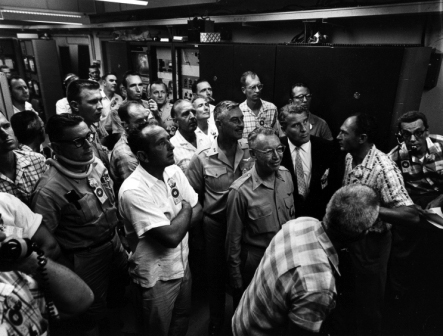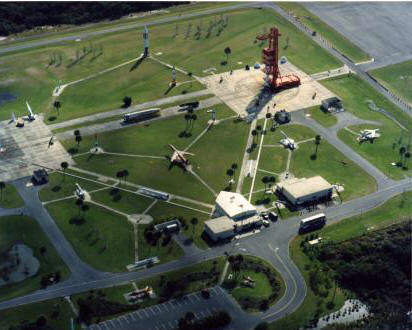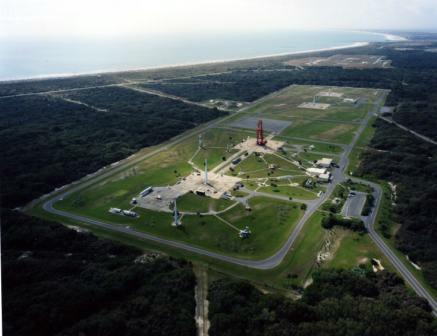
Historic First Satellite Launch
Active Launch Complex Photo Gallery
Overview
Systems
Other Programs
- Explorer (first satellite launch)
- Bioflights
- Ionosphere RF Beacon
Cost: $6,808,000
Launch Complex 26 Highlights
- 1956 – Construction started
- May 1957 – Occupied by the Army Ballistic Missile Agency
- Blockhouse wall 2 feet thick and ceiling 5-8 feet thick. Cable trays to pads, 4 feet deep by 300 feet long
- Gantry is 111 feet 9 inches high and can be lowered to a horizontal position for maintenance or for protection from storms
- 27 August 1957 to 22 January 1963 – Total of 10 Jupiters launched from Pad 26A
- 22 October 1957 to 25 January 1960 – Total of 16 Jupiters launched from Pad 26B
- 31 January 1958 – First satellite, Explorer I launched from Pad 26A by a Jupiter C booster
- 5 March 1958 – Last Jupiter C launched from Pad 26A
- 13 December 1958 – First Bioflight launched from Pad 26B with a monkey Gordo
- 28 May 1959 – Second Bioflight launched from Pad 26B with two monkeys, Able and Miss Baker
- 21 July 1959 to 4 August 1959 – Two Redstone launched from Pad 26A
- 14 August 1959 to 24 May 1961 – Total of 6 Juno II launched from Pad 26B
- 1964 – Complex deactivated
- 20 November 1964 – Launch complex reassigned to Air Force Space Museum
- April 1984 – Declared a National Historic Landmark
- Museum grounds include various outdoor static displays
- Exhibit Hall presents exhibits devoted to the history of America’s space and missile programs.
Related Pages:
- CCSFS Markers, Memorials, Sites, and Stories
- Launch Complex 26 Launch Pads Exhibit
- Launch Complex 26 Gantry Exhibit
- Launch Complex 26 Blockhouse Exhibit
- USAF Space & Missile Museum
- Visit Launch Complex 26
Air Force Space and Missile Museum Photo Gallery

























